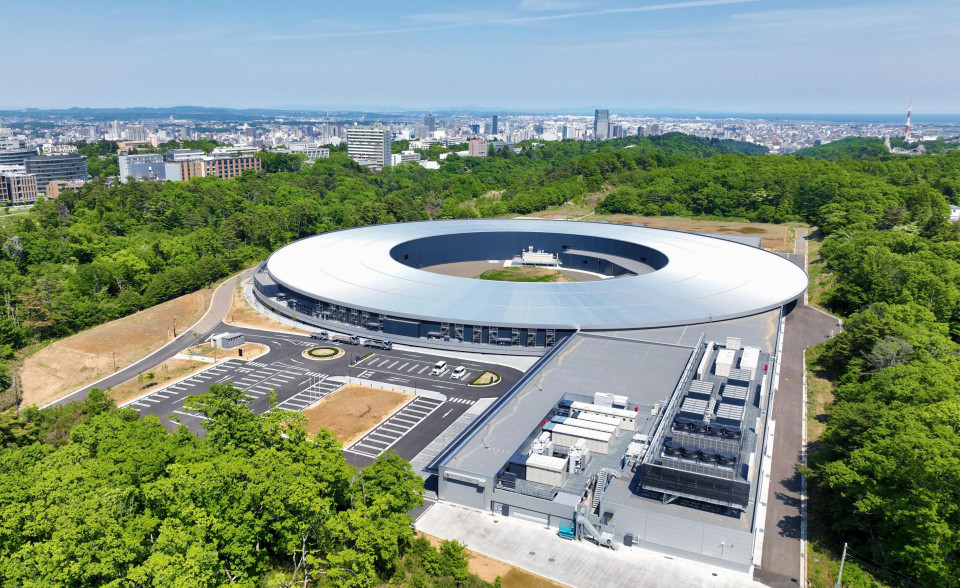A next-generation facility called a “giant microscope” that can analyze particles in detail and has the potential to pave the way for advances in materials science and drug discovery will begin operations on Tohoku University's Sendai campus in April. did.
“Nano Terrace'', which boasts cutting-edge technology and was built through public-private regional collaboration, is a facility that uses synchrotron radiation, which generates electromagnetic waves such as X-rays from an electron accelerator.
The facility will allow scientists to observe materials at the nanometer (billionth of a meter) level and is expected to foster innovation in a variety of applications in industrial development, including maintaining food quality standards. Masu.
Masataka Kado, a spokesperson for Nano Terrace who was also involved in the development of the facility, said after the facility began operations on April 1, “We are producing cutting-edge results that will enhance Japan's competitiveness.''

Nanoterrace, a next-generation synchrotron radiation facility on Tohoku University's Sendai campus, photographed on May 23, 2023. (Photo courtesy of Nanoterrace Public Relations Group) (Kyodo News)
This huge facility consists of a linear accelerator with a length of 110 meters and a circular accelerator with a circumference of about 350 meters, and the total construction cost is approximately 38 billion yen ($243 million).
The facility can accelerate electrons to nearly the speed of light and emit synchrotron radiation under the influence of a magnetic field, a process that requires a high concentration of light a billion times more intense than sunlight. We mainly deal with long wavelength soft X-rays.
The National Institute for Quantum Science and Technology and the Photonics Innovation Center are involved in the operation of the facility.
NanoTerasu can observe nanoscale phenomena that provide important insights into the industry, giving companies a competitive advantage over their rivals in product competitiveness.
For example, the facility analyzes the behavior of electrons in materials to gain insight into the chemical elements of used rubber tires to see how degradation affects tires at the nano-level, and to analyze the function of proteins in drugs. can be visualized and evaluated for drug efficacy.
Insights like this inspire the facility's name. “Terasu” is a Japanese word that means to shine a light on something.
For many years in Japan, the mainstream was the synchrotron radiation facility SPring-8 (Sayo City, Hyogo Prefecture), which uses hard X-rays to analyze the structure of materials.

The interior of the next-generation synchrotron radiation facility “Nano Terrace” in Sendai, Tohoku (photo taken on April 1, 2024). (Joint)
However, according to the Ministry of Education, Culture, Sports, Science and Technology, in recent years there has been a focus on using soft X-rays to analyze the state and function of materials.
In Europe and America, facilities have appeared that are 100 times more effective than facilities in Japan. NanoTerasu is an innovative ministry-led study launched in 2014 to reverse the performance gap.
Governments at the forefront of technology are working to lower barriers to its use. Sendai City has been granted the right to use Nano Terrace for 2,000 hours a year, and has set up a system in which local businesses can use it for a fee of around 40,000 yen per hour.
Miyagi Prefecture, which paid for the maintenance costs, is also providing support through fee reductions and exemptions. Sendai is the prefectural capital.
In order to demonstrate the usefulness of the synchrotron radiation facility, the prefecture held a meeting in March prior to NanoTerrace's operation, and held a debriefing session for companies to report on their use of existing facilities.
Sendai-based Iris Ohyama Corp., known as a market leader in innovative home appliances, reported on how the quality of tuna changes when it is thawed after a private company joined the trial operation of its facility in March.
The company was able to examine at the nanometer level how the water released during thawing impairs the taste of fish. A company official said, “If we understand the mechanism (of quality changes), we can develop products with confidence.''
Sendai Mayor Kazuko Kori said she hopes the new facility will act as a “catalyst for the development of local industry.”
The Tohoku Economic Federation estimates that the economic effect of operating Nano Terrace over the next 10 years will be 1.9 trillion yen.
A Sendai City official said, “We want to make the significance of this facility widely known so that it does not become a white elephant.''
Related article:
Special feature: A struggling sake brewery turns things around, with an eye on overseas markets
Special feature: Films show Japan's changing countryside through the eyes of mythical creatures
Special feature: Myanmar residents urge Japan to take action regarding military conscription law


